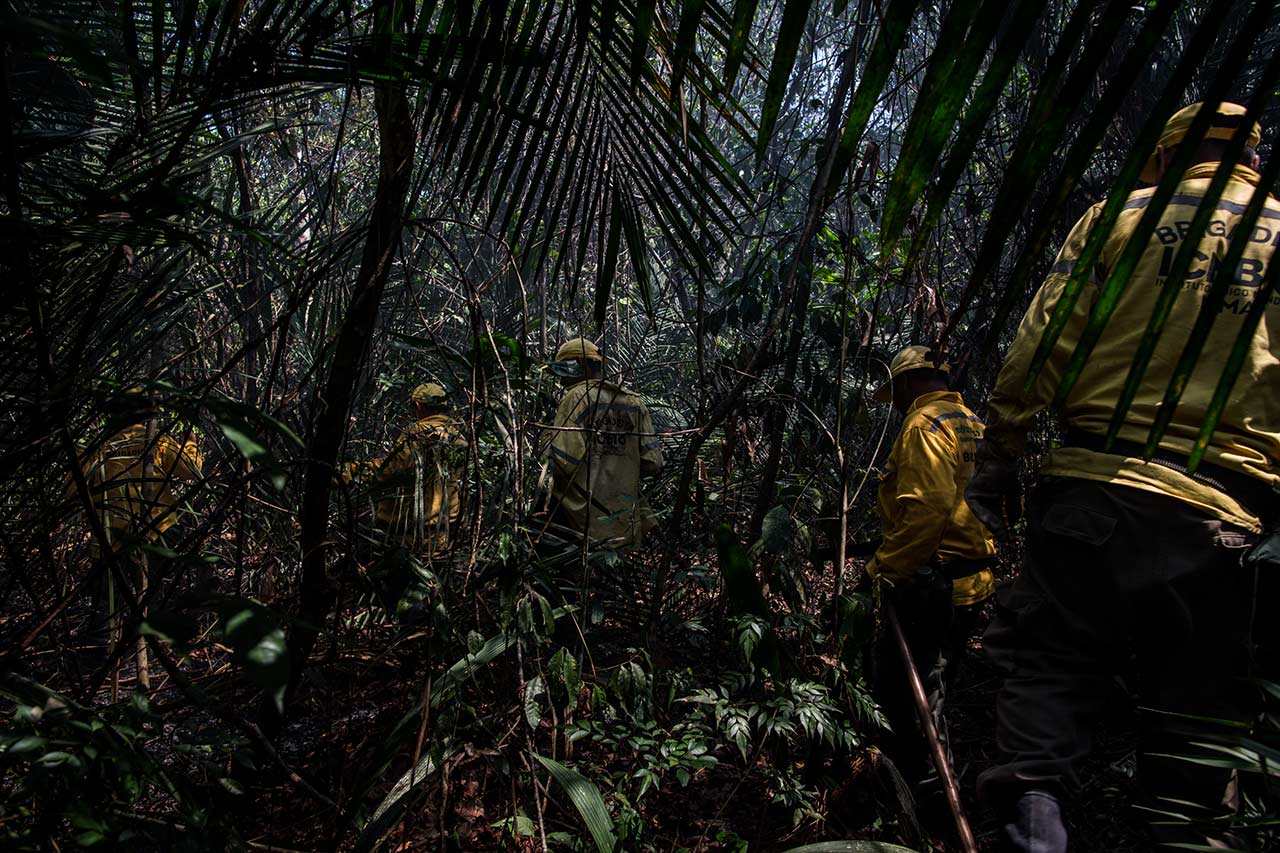
SMOKESCREEN is an in-depth analysis of fire and deforestation data in the Amazon, exposing the intrinsic relationship between these two phenomena in the past two years. For months, a journalists team composed by Letícia Klein and Thiago Medaglia (text), Flavio Forner (photos), and Laura Kurtzberg (maps), plunged into the data of fire and deforestation in the Brazilian Amazon Rainforest to conclude by the map and the numbers of National Institute for Space Research (INPE), that deforestation and burning did not occur independently of one another in the Amazon in the last two years. According to scientists interviewed by the project, fire is the last phase in the deforestation process, transforming the forest that was once there into ashes. The report breaks the false narrative that treats fire as natural in the region or as a direct consequence of cultural use by traditional populations.
View the full multimedia site at Ambiental Media.
The Amazon is not supposed to catch fire. The most biodiverse forest on the planet is humid, teeming with tree trunks covered in lichen and spongy moss, all of them accustomed to the morning mist. Each canopy in the Amazon forest, through evapotranspiration, pumps hundreds of liters of water into the atmosphere every day – the largest trees pump thousands – as a result of a unique combination that involves geographic location, vegetation cover and atmospheric systems in action. This part of South America provides rain for itself, as well as other regions of Brazil and the continent, which helps to understand the fact that its over 8,000 known tree species lack the evolutionary adaptations to fire found in savanna and boreal forest species. Such a unique ecosystem requires human intervention for it to burn. And that’s what has been happening.
From January to December of 2019, 89,000 hotspots were identified in the Amazon, 30% more than in the previous year, according to the National Institute for Space Research (INPE). From May to July of 2020, there was a 23% increase in the number of fire outbreaks compared to the same period last year – June, 2020 saw the highest rates for any month of June in the past 13 years.
Deforestation has also increased. Not even the pandemic caused by the novel coronavirus was able to contain the pressure exerted on the forest. The INPE deforestation warning system, Deter (Deforestation Detection in Real Time), estimates that over 9,000 km² were deforested from August, 2019 to July, 2020, a number that represents a 34% increase over the previous period (August, 2018 to July, 2019).
These two phenomena – deforestation and burning – did not occur independently of one another in the Amazon in the last two years. “Fire is the last phase in the deforestation process, transforming the forest that was once there into ashes”, explains Brazilian biologist Erika Erenguer, a researcher at the University of Oxford and Lancaster University, “you can’t raise cattle or farm grains with all those dead trees on the ground”.
In addition to deforestation fires, scientists classify fire in the Amazon in two other main categories. Agricultural management fires are defined as those burned in areas previously deforested and used for agricultural purposes, like clearing large pastures, and also when small farmers, indigenous peoples and traditional communities use fire in subsistence agriculture. All of these types of fires may escape to the standing forest and provoke forest fires. “Fire stewardship in the Amazon requires an understanding of what is burning, which factors influence the extent and spreading of forest fires, and how different aspects combine to make forests more flammable”, says Jos Barlow, a researcher at Lancaster University with two decades of experience in the Amazon.













